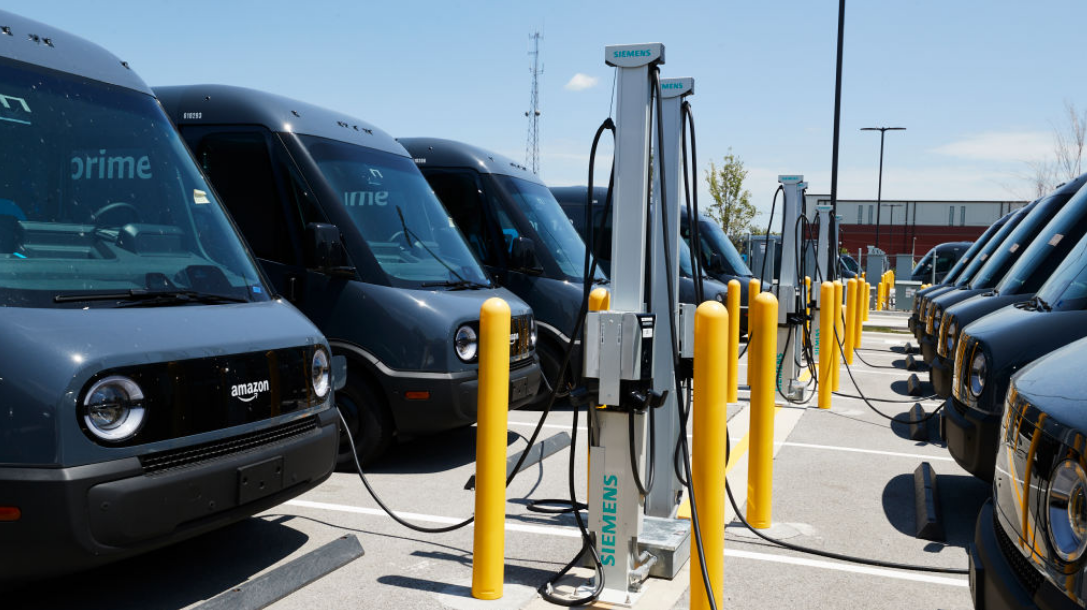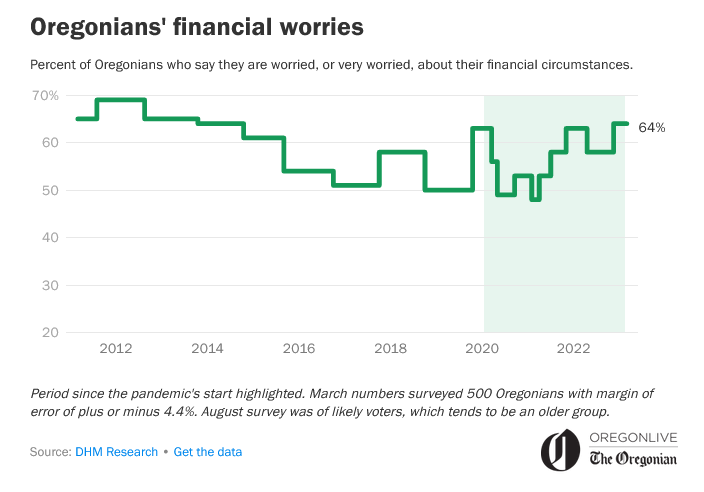By Representative David Gomberg, House District 10
Hello Neighbors and Friends,
Last week I profiled two bills intended to take early and important steps to address homelessness and housing in Oregon. Those measures have now passed both the House and Senate and are on the way to the Governor. Please take a moment to watch this KGW report.
Proposed bills get most of the attention as a legislative session unfolds. But the budget, where I do most of my work, has a greater effect on our day-to-day lives.
On the Ways and Means Committee (where the legislature develops the State’s final two-year budget), we begin with the Governor’s Recommended Budget (the GRB) and the costs of continuing what was in the last budget (Current Service Level or CSL). Then we hear forecasts of how much revenue we may have to spend. And with that, the Ways and Means Co-Chairs release a budget framework that guides subcommittees as they work to refine the final funding for each agency. The Committee traditionally tours Oregon with a schedule of hearings to hear thoughts from the public on spending. After that, agency budgets are approved.
Once agency budgets are determined and we have a good sense of funds remaining, the Committee will then consider new proposals brought forth by members of the legislature that cost money, as well as investments in capital projects like local water and sewer through bond sales.
I began this session with a commitment to fixing what’s broken, ensuring that our state’s investments are fulfilling their promises, and holding our state agencies accountable. This past week, the Budget Co-Chairs released a “no frills” budget framework that will protect vital services, get us the most for every dollar, and plan for the future by maintaining healthy reserves. That budget generally requires a 2.5% reduction in current spending.
Here are a few highlights:
Affordable Housing and Homelessness
● The Co-Chair’s framework includes the $200 million Affordable Housing and Emergency Homelessness Response package, approved early by the legislature this session. The package will help shelter Oregonians living on the street, reduce evictions that lead to more homelessness, and ramp up affordable housing production, made by Oregonians, for Oregonians across the State.
● The framework also includes $29.9 million for the Emergency Housing Assistance program to protect access to existing affordable housing units, so that landlords are supported and vulnerable renters aren’t pushed out into the streets.
Stronger Schools
● Lifting up our schools, educators, and students this session depends on stable and sufficient education funding. This framework invests $9.9 billion in the State School Fund, almost $400 million more than the current service level. The State School Fund will not be subject to the 2.5% reduction target.
● Continued funding for Statewide Education Initiatives will support professional development for educators and advance initiatives for underserved student populations at all levels, including higher education.
● A $929 million investment from the Student Investment Account will ensure schools have the stable and sufficient funding to improve literacy, graduation outcomes, and improve students’ lives. These dollars are targeted to support students’ behavioral health needs, increase academic achievement, and reduce academic disparities for students, while reducing class sizes and expanding the availability of and participation in well-rounded learning experiences.
Access to Health Care, Addiction Treatment, and Behavioral Health
● The Oregon Health Plan will also not be subject to the targeted 2.5% reductions.
● Work to ensure that every Oregonian has access to quality, affordable care through investments in community-based care and in-home agencies, modernization of the State’s public health system, and universally-offered nurse home visiting services.
Community Safety
● Every Oregonian should feel safe in their community. Improving public safety across the state must take various forms, including continued investments in Community Corrections support to counties, an increase of 30 Oregon State Police Troopers, and additional diversity, equity, and inclusion training.
● This session, we will also continue supporting implementation of effective programs that reduce gun violence and improve behavioral health and addiction programs so we’re preventing problems before they lead to violence or police intervention.
● A critical component of our public safety work will include major reforms to and investments in the state’s public defense system. This framework includes targeted investments in addressing the public defender workforce shortage crisis to make sure every Oregonian gets the representation they have the constitutional right to receive.
Economic Development
● Now is the time to invest in opportunities that will provide good-paying jobs in communities across Oregon, including investments in rural communities and the $200 million investment in the semiconductor industry, which will benefit the entire state and leverage Oregon’s investment to pursue federal CHIPS Act dollars.
Climate and Environment
● In the past two years, Oregon has seen an increasing incidence of destructive wildfires, and other events directly attributable to climate change—resulting in deaths and the destruction of homes, businesses, the agricultural industry, and landscapes. This crisis is threatening our way of life. That’s why the Co-Chair framework includes an increase to wildfire response capacity, as well as enhancements to fire protection and prevention capacity.
● Oregon may not be a large state, but we have and will continue to set the pace for the rest of the country when it comes to meeting our climate goals while bolstering local economies. That’s why we’re focused on investments that will help us reduce carbon emissions, such as allocating $3.5 million for the Department of Environmental Quality for activities aimed at reducing greenhouse gas emissions from all sources.
You can read the Budget Framework here.
Next, I look forward to taking part in the Ways and Means Roadshow and hearing directly from Oregonians about their priorities and what they value most in the state budget. That will include a stop in Newport at the Performing Arts Center on April 14 at 5 pm. Other stops include Roseburg, Ontario, Portland, and a remote statewide hearing where people can testify using their computers.

I regularly hear from folks concerned about finding recharging stations to support our increasing reliance on electric vehicles. That’s why I found this story absolutely fascinating.
Over the next two years, transportation officials in Michigan plan to embed technology in the pavement in Detroit that can charge electric vehicles while they’re being driven. The wireless system will be the first U.S. test of so-called inductive charging on public roadways, according to the Michigan Department of Transportation.
Think of the charging pads you set your phone on rather than plug them in. Now think about doing the same with your moving car!
Eventually, wireless road systems could extend electric vehicles’ battery range, reduce the idle time required to recharge batteries, and allow freight trucks to transition to electric by making it possible for them to use smaller, less expensive batteries, say proponents of the technology. They envision inductive charging along sections of highway across the country.
The technology will also make long-distance travel easier. Most EV vehicles don’t have the capacity to drive 600 miles without stopping several times for fast charging. If you can use inductive and static charging, then once you get home, you won’t have those peaks of everyone charging their EVs at the same time, so you won’t get spikes on the grid.
Drivers would use a phone app or vehicle control to choose whether to accept a charge from a road’s coils. Users would pay for kilowatts the same way they do at an EV charging station, though the system would be free to drivers during test pilots.
While we wait for the next formal revenue forecast which will determine how much we have to spend on state programs, Oregonians have an increasingly gloomy view of the economy.
Nearly two-thirds of respondents to a new poll from DHM Research say they’re worried about their own finances. That’s on par with the gloomiest numbers in the pandemic’s early days.

Even though price increases have cooled considerably from last summer, inflation is still running around 6% annually – nearly triple the pre-pandemic rate. Rising rents, grocery expenses and utility bills are wiping out much of what Oregonians saved during 2020 and 2021, when people were going out less and when federal stimulus checks were beefing up bank accounts. That means more people are living close to the edge.
Still, there are signs that the economy may be better than it feels. Oregon added 71,000 jobs last year, the second-fastest growth since 1990. Statewide employment is already above its pre-pandemic peak. Oregon private-sector wages rose by 8% last year, according to state data, and the national inflation rate fell to about 6% last month. State economists, who had been forecasting a mild recession, now say a soft landing is more likely.
Here is some brighter news.
 A rare all-white Dungeness crab caught off the Oregon coast was spared the dinner plate and donated to the Seaside Aquarium, where staff have fittingly named him … Sour Cream. The crab isn’t actually albino. He has black eyes. Sour Cream has a rare genetic condition called leucism, which causes a partial loss of pigment.
A rare all-white Dungeness crab caught off the Oregon coast was spared the dinner plate and donated to the Seaside Aquarium, where staff have fittingly named him … Sour Cream. The crab isn’t actually albino. He has black eyes. Sour Cream has a rare genetic condition called leucism, which causes a partial loss of pigment.
According to Oregon Fish and Wildlife, white Dungeness crabs seem to appear once in every 2 million to 3 million crabs. The agency told the North Coast Journal in 2021 that it receives two or three reports each year of crabs with leucism, out of an annual Dungeness harvest of about 8 million crabs. Check out a video here.
And speaking of uplifting videos, check out this five minute clip of our remarkable coastline – a Telly-Award-Winning video I think you might enjoy, produced for the Oregon Coast Visitors Association by one of our very own coast constituents.
Next Saturday, April 1st, I’ll have a busy day out-and-about in the district.
We plan to have a 10 am Town Hall in Benton County at the Corvallis Library with the League of Women Voters featuring Senator Gelser Blouin, Speaker Rayfield and myself. I’ll be meeting with representatives of the Benton and Lane County wine industry at the Lumos Winery in Philomath at noon.
At 2 pm I’ll have another Town Hall at the Community Room in the Alsea Community Library. And finally, I’ll change clothes and be your guest Master of Ceremonies for the black-tie Evening With The Stars gala supporting the Children’s Advocacy Center and Samaritan House at the Best Western in Newport.
Hope to see you out there somewhere!
email: Rep.DavidGomberg@oregonlegislature.gov
phone: 503-986-1410
address: 900 Court St NE, H-480, Salem, OR, 97301
website: http://www.oregonlegislature.gov/gomberg


